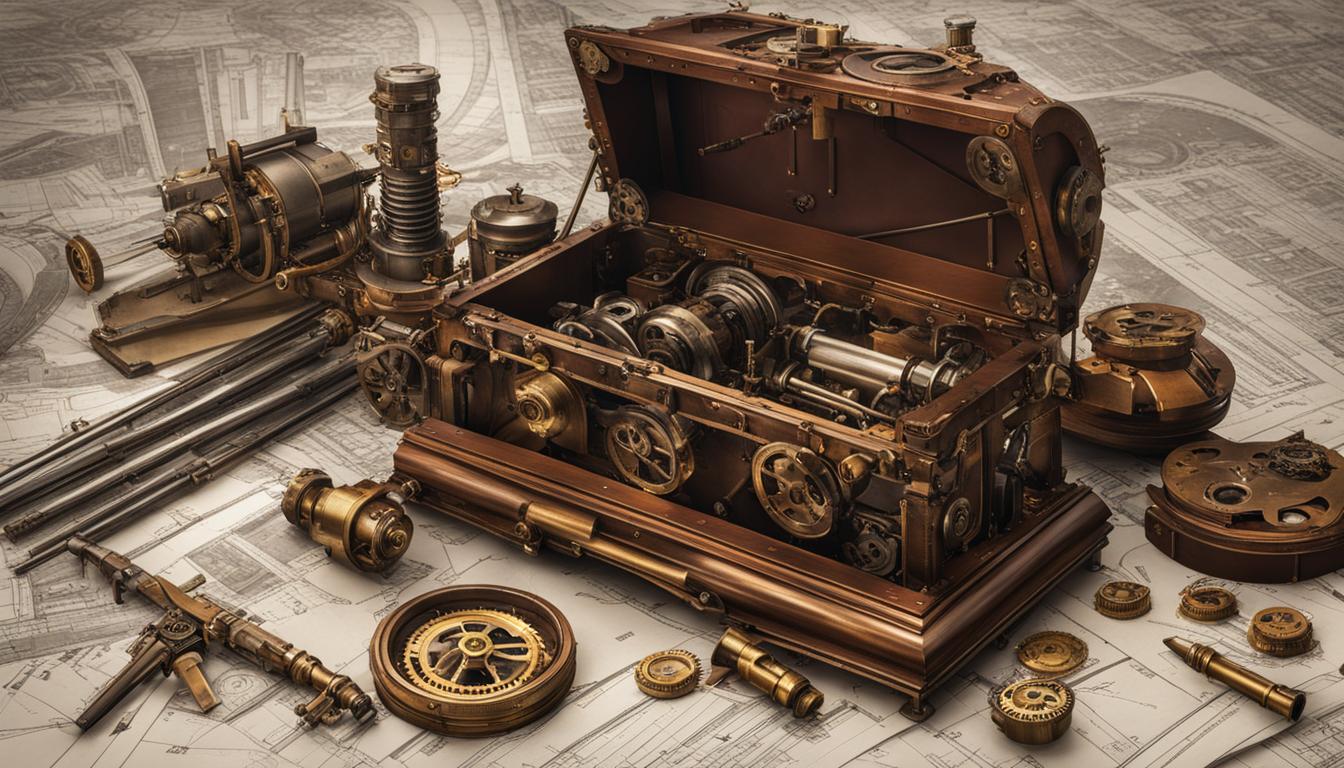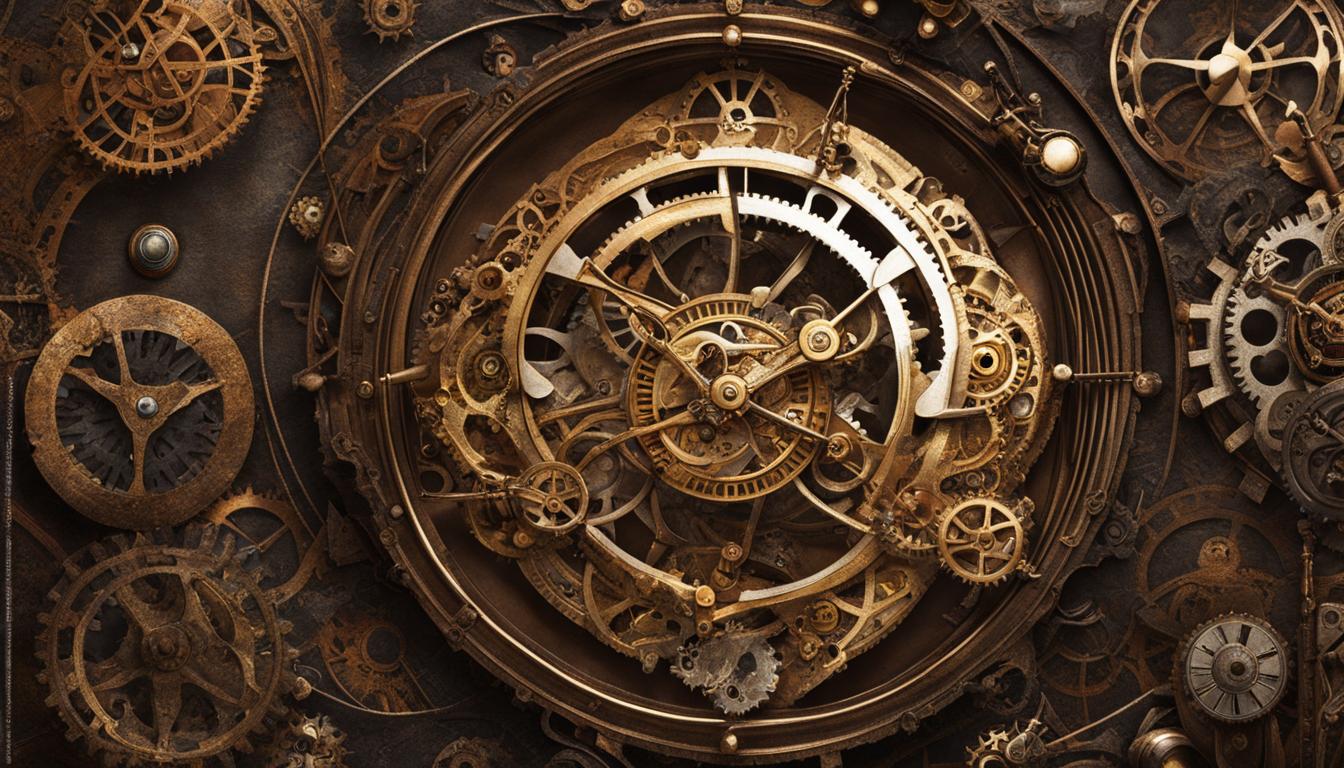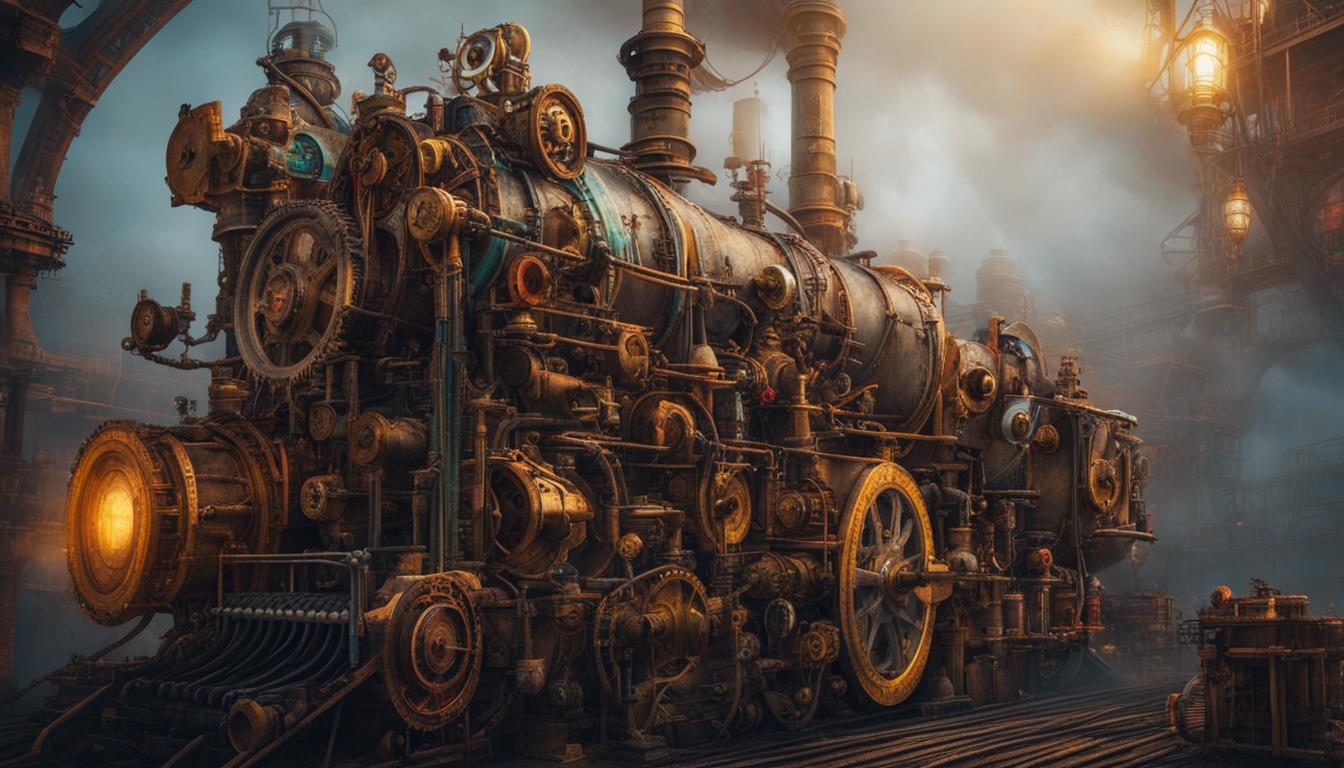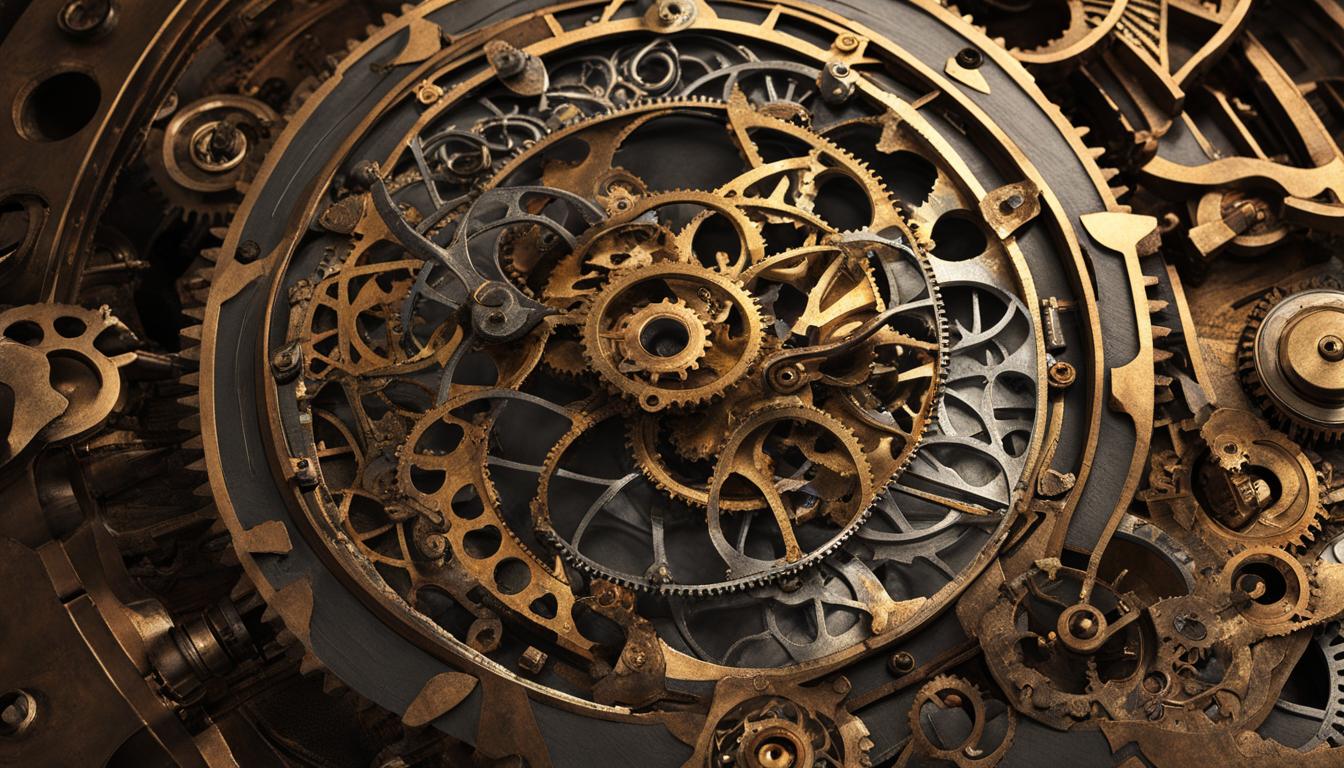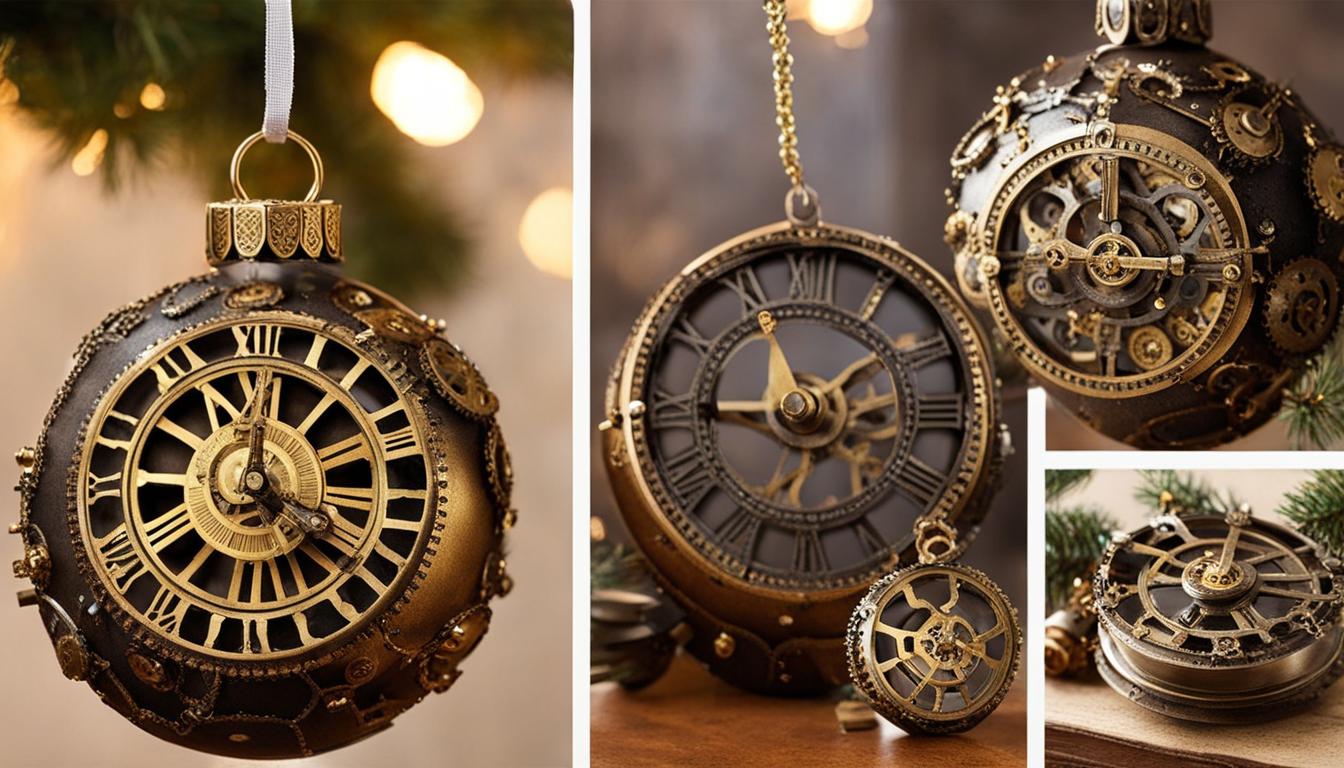Steampunk craftsmanship is an intricate art form that combines Victorian aesthetics with futuristic technology. It is a world where imagination reigns and creativity knows no bounds. However, creating steampunk masterpieces is not without its challenges. From navigating the complexities of blending old and new styles to incorporating cutting-edge technologies into vintage objects, steampunk craftsmen face obstacles that require wit, innovation, and problem-solving skills.
In this article, we will explore the challenges faced by modern steampunk artisans and delve into the strategies they employ to overcome these hurdles. From embracing Janusian thinking to infusing form with function, we will uncover the secrets behind successful steampunk craftsmanship. So, grab your goggles and tighten your corset, for we are about to embark on a journey into the mesmerizing world of steampunk mastery.
Key Takeaways:
- Modern steampunk crafting presents unique challenges that require innovative problem-solving skills.
- Embracing Janusian thinking, blending old and new styles, is crucial for overcoming hurdles in steampunk design.
- Cutting-edge technologies enable the integration of modern functionality into vintage steampunk objects.
- Steampunk can be seen as a form of design fiction, allowing craftsmen to bring imagined worlds to life through their creations.
- By studying the techniques of experienced steampunk designers, aspiring artisans can gain valuable insights into overcoming challenges in their own projects.
Embracing Janusian Thinking in Steampunk Design
Steampunk design, with its blend of Victorian aesthetics and futuristic technology, presents its own set of challenges. Tackling these difficulties requires a creative approach that embraces the concept of Janusian thinking. This philosophical approach involves merging opposites to create something new and useful. By blending the old and the new, steampunk designers can navigate the hurdles of modern steampunk crafting.
Janusian thinking allows for the synthesis of contrasting styles and eras, such as Victorian/industrial decor and modern-day technology. Steampunk artisans strive to create unique and innovative pieces by bringing together these opposing elements. The best steampunk inventions and innovations often arise from this process, resulting in elegant solutions that merge the old and the new.
Through Janusian thinking, designers can overcome the challenges of creating steampunk designs that are both visually appealing and functional. By embracing this mindset, craftsmen and artisans open themselves up to endless possibilities for problem-solving in steampunk artistry. The blend of past and present, the fusion of traditional craftsmanship and cutting-edge technologies, allows for the creation of truly remarkable and one-of-a-kind steampunk creations.
Steampunk as a Popular Design Aesthetic
Steampunk has become more than just a niche subculture; it has evolved into a popular design aesthetic that captivates enthusiasts all over the world. This unique style combines elements of Victorian elegance with industrial grit, creating a visual feast that appeals to those seeking a touch of nostalgia and a glimpse of an alternate reality.
While the steampunk movement embraces individual creativity and craftsmanship, there are common issues that often arise in steampunk crafting. One challenge is creatively modifying authentic Victorian or industrial objects without compromising their integrity. Steampunk artisans must find ingenious ways to blend these period items with modern technology, creating a seamless fusion that maintains the feeling of permanence.
Common Issues in Steampunk Crafting
- Limited availability of authentic Victorian or industrial objects
- Ensuring outstanding craftsmanship while incorporating modern technology
- Overcoming size limitations when integrating cutting-edge technologies into smaller existing spaces
- Preserving the essence of the original object while adding modern functionality
Overcoming these difficulties requires a deep understanding of both the historical and the contemporary. Steampunk designers must possess the skills to repurpose and modify objects from the past while staying up-to-date with the latest advancements in technology. By embracing these challenges, steampunk artisans can create stunning pieces that seamlessly blend the old and the new.
| Issue | Solution |
|---|---|
| Limited availability of authentic Victorian or industrial objects | Resourcefulness in sourcing materials and repurposing antiques |
| Ensuring outstanding craftsmanship while incorporating modern technology | Dedication to honing craft skills and staying updated on technological advancements |
| Overcoming size limitations when integrating cutting-edge technologies into smaller existing spaces | Innovation in miniaturization and efficient utilization of available space |
| Preserving the essence of the original object while adding modern functionality | Delicate balance between restoration and enhancement, maintaining the charm of the original item |
Steampunk crafting may present its fair share of challenges, but by addressing the common issues head-on and approaching them with creativity and resourcefulness, artisans can overcome these difficulties and continue to push the boundaries of this captivating design aesthetic.
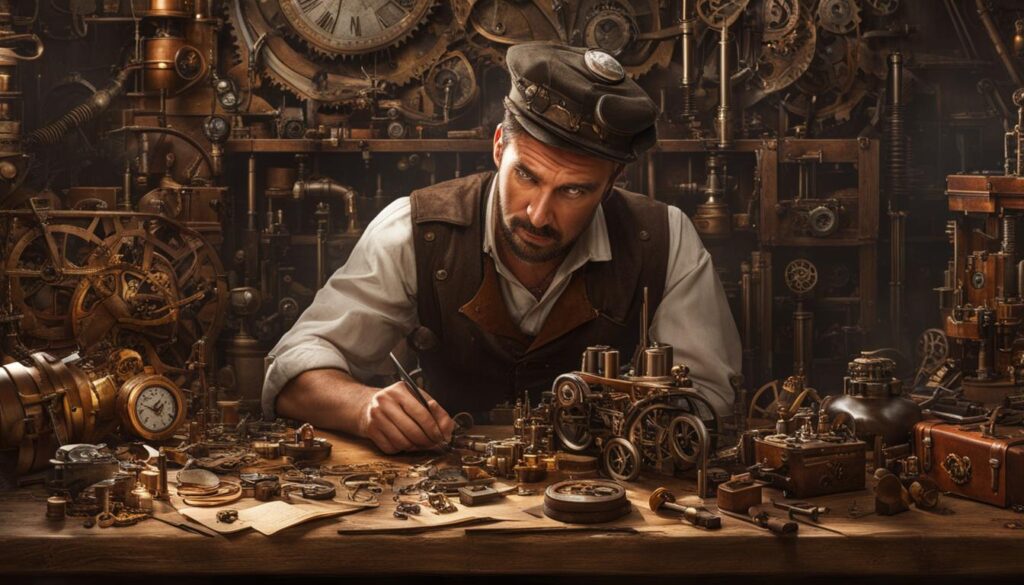
Steampunk: Form & Functional
In the realm of modern steampunk design, the fusion of 21st-century technology with authentic Victorian objects is a delicate art. Craftsmen and artisans face the challenge of integrating cutting-edge technologies into the limited space of Victorian cabinets and desks. The trend towards miniaturization in electronics has been a boon for steampunk inventors, allowing them to incorporate more advanced features into smaller spaces. However, balancing technology and design is essential to preserve the essence of the original object while adding modern functionality.
With a deep understanding of cutting-edge technologies, steampunk designers can breathe new life into Victorian relics. By crafting elegant solutions, they can seamlessly integrate digital displays, wireless connectivity, and interactive components into vintage structures. This intricate balance between past and present, utility and aesthetics, sets steampunk design apart.
“In steampunk design, mechanics merge with imagination, creating a world where a simple clockwork device can control a complex network of gears and levers.”
The marriage of form and function in steampunk design extends beyond the aesthetic appeal. Craftsmen must consider the practicality of their creations, ensuring that the technology seamlessly integrates into the Victorian framework. Attention to detail is paramount, as every component must serve a purpose and contribute to the overall functionality of the piece. It is this attention to detail that elevates steampunk craftsmanship to an art form.
| Challenges in modern steampunk crafting | Cutting-edge technologies in steampunk design | Problem-solving in steampunk DIY |
|---|---|---|
| Integration of 21st-century technology into Victorian objects | Miniaturization of electronics for compact spaces | Designing elegant solutions |
| Balancing technology and design | Crafting interactive components | Ensuring practicality and functionality |
| Preserving the essence of the original object | Seamlessly integrating digital displays | Attention to detail |
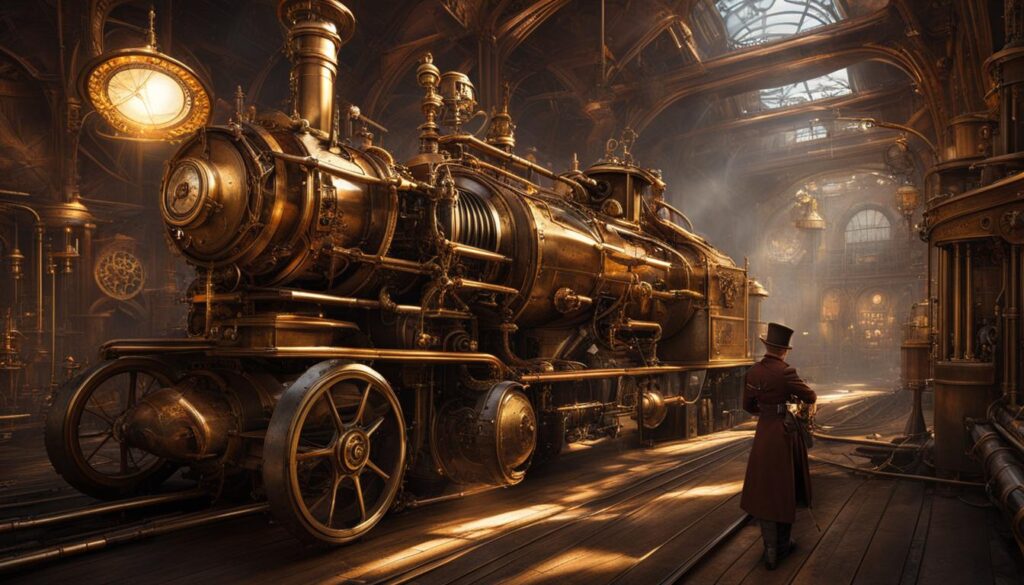
Steampunk as Design Fiction
Steampunk, with its blend of Victorian aesthetics and futuristic technology, can be seen as a form of design fiction. It allows designers to bring to life an imagined world through their creative practice. The DIY and appropriation practices evident in steampunk design provide valuable strategies and implications for problem-solving in steampunk projects.
“Steampunk allows us to physically realize an ideological and imagined world through design practice, creating unique and innovative pieces.” – Steampunk Designer
By studying online practices of steampunk designers and delving into the documentation of their techniques and methods, we can gain insights into how to address and overcome challenges in steampunk craftsmanship. The steampunk community is known for its resourcefulness and ingenuity, constantly pushing the boundaries of what is possible with the blending of old and new.
Appropriation and Innovation
In steampunk design, appropriation is key. It involves creatively modifying authentic Victorian or industrial objects and seamlessly blending them with modern technology. By embracing this approach, steampunk designers solve problems inherent in the limited availability of genuine vintage items while still preserving the essence of the original object.
Furthermore, steampunk designers often repurpose and adapt existing technologies to fit within the constraints of Victorian aesthetics. It is this combination of appropriation and innovation that allows for the creation of functional and visually stunning steampunk pieces.
| Problem | Steampunk Solution |
|---|---|
| Limited availability of authentic Victorian objects | Creative modification and blending with modern elements |
| Integration of modern technology into Victorian aesthetics | Repurposing and adapting existing technologies |
| Preservation of original object’s essence | Seamlessly blending old and new elements |
Through the lens of design fiction, steampunk offers a rich tapestry of problem-solving approaches that continue to inspire and influence the broader design community. By tapping into this ethos of ingenuity and imagination, crafters and makers can navigate and overcome the unique challenges presented in the world of steampunk design.
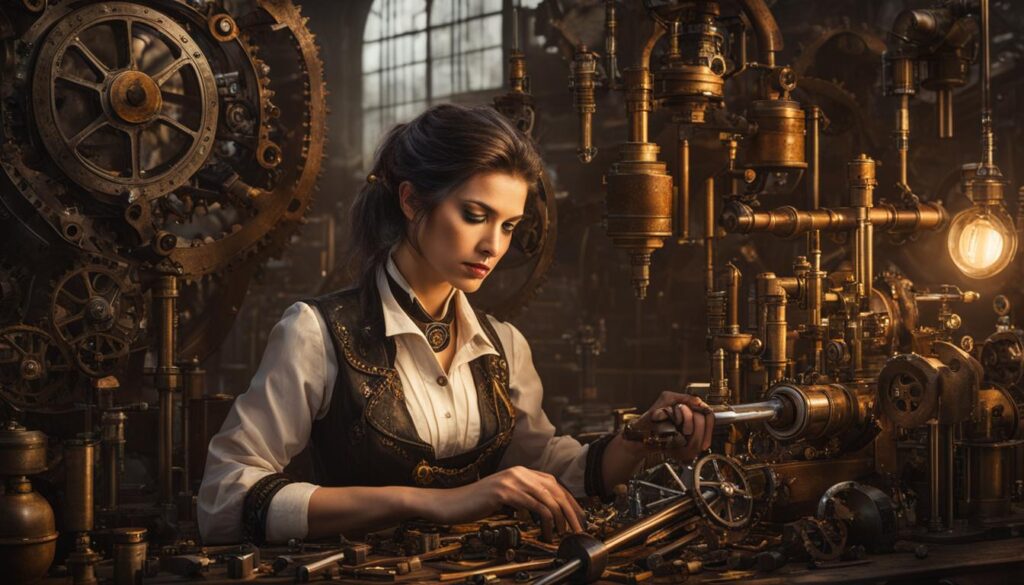
Conclusion
Steampunk craftsmanship may present its fair share of challenges, but fear not! With a dash of independent creativity, a sprinkle of Janusian thinking, and a generous helping of cutting-edge technologies, these obstacles can be triumphed over.
Steampunk design is a realm where past meets present, where the fusion of Victorian aesthetics and modern-day innovation reigns supreme. By embracing the spirit of individuality and craftsmanship, artisans can navigate the rocky terrain of modern steampunk crafting.
The key to overcoming challenges lies in the ability to blend opposites through Janusian thinking. By fusing the old and the new, designers can create unique and innovative pieces that conquer the hurdles in steampunk artistry.
In this realm, technology plays a pivotal role. With a deep understanding of cutting-edge advancements, craftsmen can seamlessly integrate 21st-century marvels into the nooks and crannies of authentic Victorian objects. It is the balance between technology and design that ensures the essence of the original piece is preserved while adding a touch of modern functionality.
So, let your imagination run wild, let your creativity soar, and let your wrenches and gears do the talking. With dedication to craftsmanship and an adventurous spirit, you too can overcome the challenges in modern steampunk crafting and create truly one-of-a-kind masterpieces.
FAQ
What are the main challenges in modern steampunk crafting?
The main challenges in modern steampunk crafting involve the need for independent creativity and craftsmanship.
How do steampunk designers overcome these challenges?
Steampunk designers overcome these challenges by embracing Janusian thinking and blending old and new styles to create unique and innovative pieces.
What are some general rules to follow in steampunk modification?
Some general rules to follow in steampunk modification include creatively modifying authentic Victorian or industrial objects, prioritizing outstanding craftsmanship, and seamlessly blending the period item with modern technology.
What is the focus of modern steampunk design?
The focus of modern steampunk design is to infuse 21st-century technology into authentic Victorian objects, requiring a deep understanding of cutting-edge technologies and the ability to fit them into smaller existing spaces.
How can steampunk design be seen as a form of design fiction?
Steampunk design can be seen as a form of design fiction as it physically realizes an ideological and imagined world through design practice, offering strategies and implications for problem-solving in steampunk projects.
How can challenges in steampunk craftsmanship be overcome?
Challenges in steampunk craftsmanship can be overcome by embracing independent creativity, blending opposites through Janusian thinking, and utilizing cutting-edge technologies.

